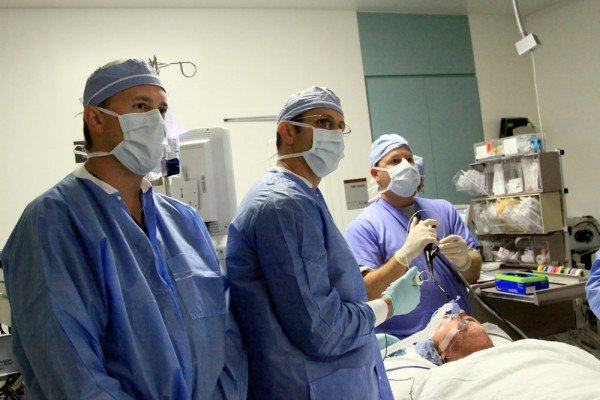
Under the terms of a proposed merger of regional hospitals systems, Mission Hospital Laguna Beach and Mission Viejo will continue their current operations for at least five years, according to a report issued by the state’s attorney general.
Under the change of control agreement, Mission Hospital will also continue charity care for patients at no less than $7.4 million and continue its practice of community benefit, distributing and donating no less than $5.9 million worth of services for various community needs, for the same period, the agreement says.
State officials plan a public hearing Wednesday, April 20, at 9 a.m., at Mission Viejo City Hall, 100 Civic Center, over the local impact of the proposed merger of St. Joseph Health with Providence Health & Services of Renton, Wash. Mission Hospital Regional Medical Center, comprised of hospitals in Mission Viejo and Laguna Beach, previously combined with Hoag Memorial Hospital Presbyterian, with hospitals in Newport Beach and Irvine.
Together St. Joseph and Providence will operate 18 hospitals in California. Providence facilities are also located in four other Western states.
Registered nurses say they will call on the attorney general to deny the merger, Melinda Markowitz, co-president of California Nurses Association, said in a statement issued Thursday, April 14.
She said the conditions of approval fail to address several issues, including access to healthcare services, patient safety, and the working environment.
Nurses contend that women’s reproductive health services and end of life care are at a risk, due to ethical and religious directives for Catholic healthcare.
Nurses think the public should share in the benefits of the consolidation with an increased pledge of charity care and other community benefits.
Finally, the nurses union calls on the attorney general to order St. Joseph to end a “union-busting campaign” against nurses who advocate for themselves and patients, citing complaints issued against six St. Joseph hospitals by the National Labor Relations Board in 2015.
“Only in this way can what is currently a good deal only for the two extremely wealthy healthcare systems, become one that benefits the communities served,” says the statement.
To the relief of Laguna city officials, Mission has made capital improvements and attracted donors to the once faltering former South Coast Medical Center since its acquisition in 2009. “That was one of the happiest days of my life when they took it over,” said City Council member Kelly Boyd.
Chief among the city’s concerns is maintaining the facility’s 12-bed emergency room, assured for five years under the agreement’s terms. With a staff of 344, the 207-bed hospital is one of the town’s largest employers.
Boyd expressed no reservations about the potential impact on services in Laguna as a result of the expected merger. “They seem very committed,” he said.
The health care impact statement assessing the combined non-profit systems shows some strain at the Mission Hospital campuses in Mission Viejo and Laguna Beach. Since 2012, the number of patients has declined 8 and 9 percent, respectively, though emergency room visits rose slightly to 56,967 in 2014, the report says. Even so, the combined hospitals’ net income remained steady between 2010-14 at $57 million, while total revenue rose 7.4 percent to $473 million, the report shows.
Hospital advocate and former council member Cheryl Kinsman remained involved with the hospital’s community advisory council until it disbanded in 2014. Economies of scale to provide services more cheaply is behind the consolidation, she said.
Besides an emergency room, the Laguna facility also provides chemical dependency, behavioral health, and eating disorder services as well as 75-acute care and 10 intensive care beds.
At the combined hospitals, the rate of patients re-admitted within 30 days suffering heart attack, heart failure or pneumonia was 17.6 percent, lower than the 18.6 percent state and national averages, the report says.
Over the next 15 years, costly retrofitting of buildings at both campuses is required to meet state seismic standards, the report notes.
This story was updated April 15 after the print edition was published.




